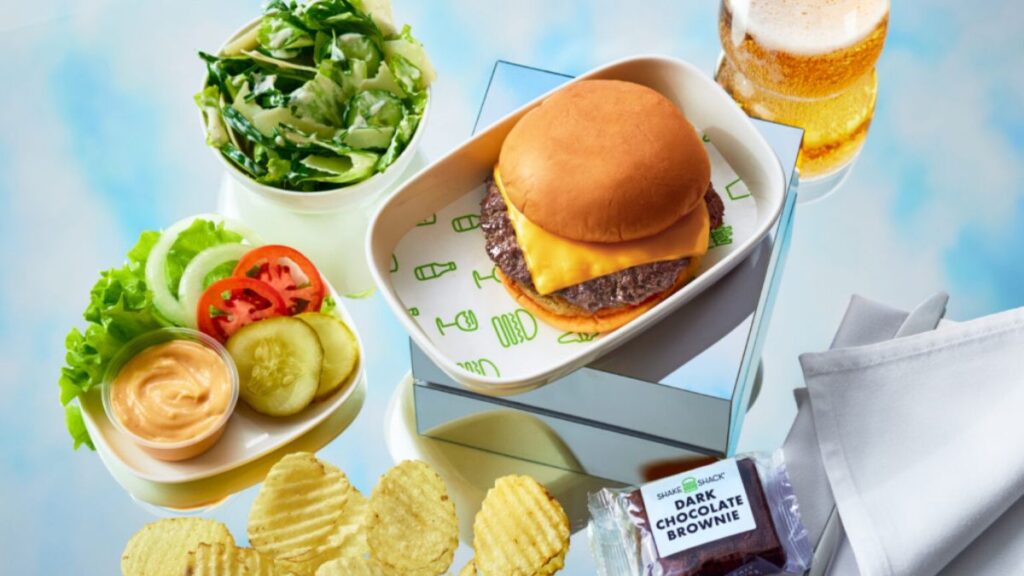In an era where travelers expect more than just a seat and a safe journey, airlines are investing heavily in enhancing the inflight experience—particularly when it comes to food. Inflight dining has evolved from bland, pre-packed meals to curated culinary experiences that rival some fine dining restaurants. This transformation isn’t just about satisfying hunger—it’s a strategic move to elevate brand value, cater to evolving passenger expectations, and stay competitive in a dynamic aviation industry.Welcome to the golden age of inflight catering.
The Evolution of Airline Meals
There was a time when inflight meals were synonymous with rubbery chicken and soggy pasta. Limited space, strict safety standards, and altitude-induced taste bud dulling all contributed to the less-than-stellar reputation of airplane food. However, airlines have flipped the narrative by transforming inflight catering into an art form.
Now, international carriers and even some budget airlines are pushing culinary boundaries, enlisting celebrity chefs, offering regionally inspired menus, and incorporating dietary flexibility to create personalized, enjoyable meals at 35,000 feet.
Why Airlines Are Rethinking Inflight Catering
- A Competitive Edge
In the fiercely competitive aviation sector, inflight catering serves as a key differentiator. While factors like seat comfort and pricing remain crucial, the quality of inflight food significantly influences a passenger’s perception of the overall journey—especially in premium cabins. - Passenger Expectations
Modern travelers are food-conscious and well-informed. They expect options that align with their dietary preferences—vegan, gluten-free, halal, kosher, low-calorie, or locally sourced. Airlines that fail to adapt risk losing customers to those offering more thoughtful dining experiences. - Branding and Loyalty
A well-crafted inflight menu can reinforce an airline’s brand image. For example, Japanese carriers serve meticulously prepared bento boxes, while Middle Eastern airlines offer lavish multi-course meals with regional delicacies. These experiences leave lasting impressions and foster customer loyalty.
The Role of Technology and Innovation
Airlines are leveraging technology to improve inflight catering logistics and personalize the experience:
- Pre-Order Systems: Many airlines now allow passengers to choose meals online before the flight, reducing waste and ensuring meal availability.
- AI and Data Analytics: By analyzing customer preferences and previous meal choices, airlines can better predict demand and tailor menus to individual tastes.
- Smart Packaging: Innovative food packaging helps retain flavor and texture, ensuring meals taste as fresh as possible even after reheating.
Collaborations with Top Chefs
A growing trend in inflight dining is the partnership with celebrity and Michelin-starred chefs. These collaborations help airlines design menus that are both gourmet and suitable for high-altitude conditions. Some notable examples include:
- Singapore Airlines with its “International Culinary Panel” featuring renowned chefs from around the world.
- Qatar Airways collaborating with chefs like Nobu Matsuhisa and Ramzi Choueiri.
- Turkish Airlines employing “Flying Chefs” to freshly plate meals onboard.
These partnerships aren’t just for prestige—they bring real culinary expertise into the unique constraints of inflight kitchens.
Focus on Sustainability
Sustainability is becoming a central theme in inflight catering. Airlines are increasingly:
- Reducing single-use plastics.
- Sourcing local, organic ingredients.
- Offering plant-based meal options.
- Minimizing food waste through better forecasting and technology.
Lufthansa, for example, has introduced the “Onboard Delights” menu, featuring sustainable packaging and local sourcing, while Emirates has pledged to reduce plastic waste across all its flights.
Regional Cuisine and Cultural Touchpoints
Another way airlines are improving the inflight dining experience is by celebrating regional cuisine. This not only gives passengers a taste of their destination but also strengthens an airline’s cultural identity.
For instance:
- Air India offers traditional Indian thalis with a variety of curries and breads.
- Ethiopian Airlines serves injera with lentil and meat stews.
- Korean Air includes bibimbap and kimchi, enhancing cultural connection through food.
Such offerings cater to both local passengers who feel at home and international travelers who seek an authentic culinary introduction to their destination.
Enhancements in Economy Class
While much of the culinary spotlight shines on business and first-class cabins, airlines are also improving meals in economy class. The focus here is on freshness, flavor, and presentation.
Some budget airlines have even started offering gourmet meals as paid add-ons. Passengers can pre-order meals like sushi, artisan sandwiches, or hot paninis—a significant upgrade from the usual tray meals.
The Future of Inflight Catering
Looking ahead, inflight catering is poised to become even more customized and tech-driven. Possible innovations include:
- Personalized menus based on frequent flyer data.
- 3D printed food for specific dietary needs.
- Augmented reality menus for better visualization.
- Climate-friendly menus based on carbon footprint metrics.
As airlines continue to explore new technologies and respond to consumer demand, one thing is certain—bland airline food is fast becoming a thing of the past.
Conclusion
From gourmet chef partnerships to personalized digital menus, inflight catering has become a cornerstone of modern air travel. For airlines, it’s more than just a meal—it’s an opportunity to delight customers, express brand identity, and build lasting loyalty. As culinary expectations soar, so too does the industry’s commitment to making every bite above the clouds as memorable as the journey itself.







